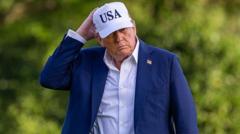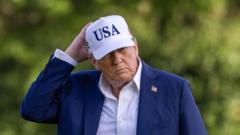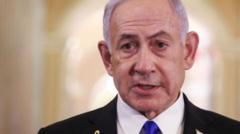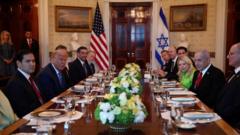Despite promises of rapid deal-making, the Trump administration stumbles on tariffs, marking a significant shift in the global trade landscape.
Trump Extends Tariff Delays Amidst Global Trade Tensions

Trump Extends Tariff Delays Amidst Global Trade Tensions
Donald Trump's administration prolongs the already contentious tariff process, stirring reactions from international trading partners.
In a surprising move, the Trump White House has announced a delay in implementing tariffs originally planned, leaving many in the business world speculating about the President's strategy. What was touted as “90 deals in 90 days” now faces an embarrassing reality as there appears to be little progress on even nine agreements before the first deadline of July 9. With a revised deadline now set for August 1, there are hints of possible extensions, further highlighting the uncertainty clouding U.S. trade policy.
U.S. Treasury Secretary Scott Bessent emphasized that priority is being given to the 18 countries primarily responsible for America's trade deficit. However, this delay comes off as an admission of stunted negotiations rather than a robust diplomatic endeavor. The letters dispatched to trading partners echo a similar strategy previously used by the White House, suggesting continuity rather than innovation.
Notably absent this time is the market chaos that characterized the earlier stages of trade tensions, as financial markets adapt to the notion of rolling delays—coined TACO, or Trump Always Chickens Out. Yet, fears loom that this foot-dragging could provoke a renewed trade crisis.
The Trump administration's strategy has drawn annoyance from nations like Japan and South Korea, who are now feeling the sting of unfulfilled promises. Japan's finance minister has even hinted at leveraging its substantial holdings of U.S. debt as a bargaining tool, alerting the U.S. to potential consequences stemming from its rigid position.
Globally, the market behavior reflects a shifting narrative: while American retailers brace for rising costs and potential shortages, trade patterns are beginning to showcase that countries are pivoting away from relying heavily on the United States. Recent data suggests a stark contrast in exports: while Chinese shipments to the U.S. dropped 9.7% this year, their exports to other nations surged, particularly to the UK, ASEAN countries, and Africa.
While U.S. Treasury revenues from tariffs saw record numbers in May, the effective tariff rate imposed on global partners has soared to approximately 15%, a sharp increase from the previously stable rates of 2% to 4% over the last four decades. As the rest of the world responds with their own trade agreements and economic partnerships, the equilibrium of international commerce is shifting, compelling the U.S. to reconsider its approach to trade. The market response remains stolid for now, but uncertainty looms, suggesting that volatility may still lie ahead.




















